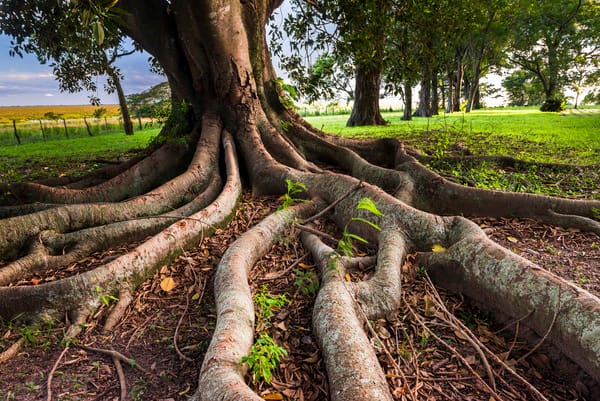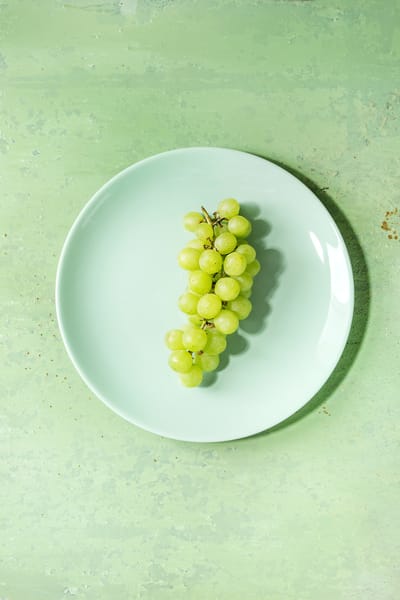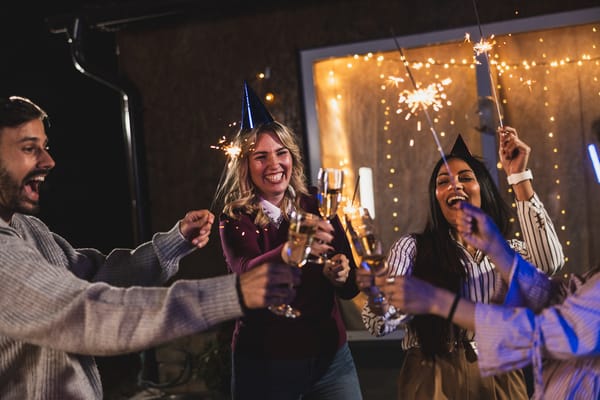- Introduction: Beyond Fireworks – A Night of Magic and Superstition
- The Foundation: Why Are Traditions So Important on New Year’s in Colombia?
- The Ultimate Guide to Colombian Traditions for New Year’s Eve
- FAQ: Your Quick Questions Answered
- Conclusion: A New Year Filled with Hope and Magic
Summary:
- The 12 Grapes of Luck: At the stroke of midnight, you must eat one grape for each of the twelve chimes, making a specific wish for each month of the coming year.
- The Suitcase Run for Travel: To ensure a year filled with travel and adventure, you must grab an empty suitcase and run around the block right after midnight.
- Yellow Underwear for Prosperity: Wearing brand new, yellow underwear on New Year’s Eve is a must-do ritual to attract love, luck, and wealth.
- Lentils for Abundance: Filling your pockets, wallet, and purse with a handful of raw lentils is believed to guarantee a year of economic prosperity and a full pantry.
- Burning the “Año Viejo” Doll: Colombians create life-sized dolls representing the old year and burn them at midnight in a powerful symbolic act of cleansing away the negative and welcoming a fresh start.
Introduction: Beyond Fireworks – A Night of Magic and Superstition
When you think of New Year’s Eve, what comes to mind? For many, it’s the glittering ball drop in Times Square, spectacular fireworks over Sydney Harbour, or clinking champagne glasses with friends. In Colombia, however, the turn of the year is a spectacle of a different kind—a night steeped in fascinating, heartfelt, and wonderfully superstitious rituals. Get ready to discover the world of Colombian New Year traditions.
If you’ve ever been in Colombia on December 31st or are planning a trip, you’re in for a unique cultural treat. This is a night where practicality gives way to magic, and every action is infused with hope for the future. But what are these Colombian traditions for the new year, and what do they all mean?
This is your ultimate guide. We will dive deep into the most iconic and beloved rituals, from the frantic race to eat twelve grapes to the bizarre but brilliant tradition of running around the block with a suitcase. We’ll explain the history, the symbolism, and exactly how you can participate to bring a little Colombian magic into your own new year. Forget simple resolutions; let’s explore how to actively manifest a year of travel, love, and prosperity!
The Foundation: Why Are Traditions So Important on New Year’s in Colombia?
To truly appreciate these rituals, it’s important to understand the cultural soil from which they grow. Colombian traditions, especially those around the holidays, are a rich tapestry woven from different historical and cultural threads.
1. A Blend of Cultures: Spanish, Indigenous, and African Roots
Many of the most popular traditions, like eating twelve grapes, have their direct roots in Spain. Colonial history brought many European customs to South America, which were then adapted and blended with local indigenous and African beliefs. This fusion created a unique set of rituals that are distinctly Colombian. The emphasis is on family, hope, and taking an active role in shaping one’s own destiny for the coming year.
2. The Power of “Agüeros”: Superstitions for a Better Future
Most of the New Year’s rituals are known as agüeros. An agüero is a superstition or an omen, but in this context, it’s better described as a good luck ritual. Colombians are, by and large, a hopeful and optimistic people, but they also have a healthy respect for fate and luck. These agüeros are not just silly games; they are tangible acts of faith, a fun and communal way to put positive energy out into the universe and actively try to influence the future for the better.
3. More Than Just a Night: The Festive Season from Christmas Onwards
The New Year’s celebration in Colombia doesn’t exist in a vacuum. It’s the grand finale of a month-long festive season that is deeply important to the national identity. The holiday spirit truly kicks off on December 7th with the Día de las Velitas (“Day of the Little Candles”), when families light thousands of candles to honor the Immaculate Conception and officially welcome Christmas.
This is followed by the Novena de Aguinaldos, a nine-day period of prayer and gatherings leading up to Christmas, where families and neighbors come together to pray, sing, and eat. A central part of this is the Pesebre, an elaborate nativity scene that goes far beyond a simple manger, often depicting an entire village. Understanding this festive build-up helps explain the explosive, joyful energy of New Year’s Eve.

The Ultimate Guide to Colombian Traditions for New Year’s Eve
Get your grapes and your suitcase ready! Here is a detailed look at the most important Colombian traditions for New Year’s that you will see and can participate in across the country on December 31st.
1. The 12 Grapes of Luck (Las Doce Uvas de la Suerte)
This is arguably the most widespread and iconic New Year’s tradition in Colombia and much of the Spanish-speaking world.
- The “What”: As the clock begins to strike midnight, you must eat twelve grapes, one for each chime. With every grape you eat, you make a specific wish or set an intention for each of the twelve months of the coming year.
- The “How”: This is a frantic, hilarious, and often challenging ritual. You have only the time it takes for the clock to chime twelve times to stuff all twelve grapes into your mouth and swallow them. It’s a race against time that leaves everyone with full cheeks and a laughing start to the new year.
- The “Why”: Each grape represents a month. Successfully eating them all is said to guarantee a year of luck and that your twelve wishes will come true.
- A Personal Anecdote: My first time experiencing this, I thought it would be easy. I was wrong. By the seventh grape, my cheeks were full, and I was laughing so hard I could barely chew. It’s a moment of pure, chaotic joy shared with everyone around you.
2. The Suitcase Run for a Year of Travel (La Vuelta a la Manzana con la Maleta)
This is the favorite tradition of every traveler and dreamer.
- The “What”: Immediately after the midnight toast, you grab an empty suitcase and run (or walk briskly) around your block or street (la vuelta a la manzana).
- The “Why”: This is a powerful act of manifestation. The ritual is believed to guarantee that the new year will be filled with travel and adventure. The farther you run, the farther you’ll travel!
- Variations: Some people insist the suitcase must be completely empty to symbolize making space for new travel experiences. Others put a few items inside representing the kind of trips they want. Either way, at around 12:05 AM on January 1st, you will see streets all over Colombia filled with laughing people pulling empty suitcases behind them. It’s a wonderfully bizarre and hopeful sight.
3. Yellow Underwear for Love and Luck (La Ropa Interior Amarilla)
This is a fun and slightly more private ritual that is taken very seriously.
- The “What”: You must wear a brand new pair of yellow underwear on New Year’s Eve. For maximum effect, some say it should be worn inside-out and then turned the right way after midnight.
- The “Why”: In Colombian culture, the color yellow is deeply associated with gold, wealth, happiness, love, and good fortune. Wearing it is believed to attract all of these positive things in the coming year.
- Variations: While yellow is the most popular color for general good luck, some people choose other colors for specific intentions. Red underwear is worn to attract passion and romance, while green is sometimes chosen to attract money.
4. Lentils in Your Pockets for Abundance (Las Lentejas de la Abundancia)
A simple but powerful ritual for attracting wealth.
- The “What”: Before midnight, you take a handful of raw, uncooked lentils and fill your pockets, wallet, or purse with them.
- The “Why”: Lentils are small, numerous, and have a coin-like shape. They are an ancient symbol of abundance, sustenance, and economic prosperity. Carrying them at the moment the year turns is believed to ensure that your pockets will be full of money and your pantry full of food throughout the year. It’s one of the most popular Colombian traditions.
5. Burning the “Año Viejo” Doll (La Quema del Año Viejo)
This is one of the most dramatic and cathartic Colombian new year traditions.
- The “What”: Families and communities build a life-sized doll, called the Año Viejo (“Old Year”). This doll is often stuffed with old clothes, paper, and sometimes fireworks. At the stroke of midnight, the doll is set on fire.
- The “Why”: This is a powerful act of symbolic cleansing. The Año Viejo represents all the negative experiences, sorrows, and bad luck of the year that is ending. By burning the doll, you are symbolically destroying that negativity, purifying yourself, and making a clean slate for the new year.
- How it’s made: It’s a creative process. Families use old clothes from family members to make it personal. Often, the dolls are given a mask of an unpopular political figure or a celebrity from the year’s news, adding a layer of social commentary and humor to the ritual.
6. The First Step (El Primer Paso)
A small, simple ritual to start the year off right.
- The “What”: As the new year begins, you make a conscious effort to take your very first step with your right foot.
- The “Why”: This is the Spanish equivalent of “starting off on the right foot.” It symbolizes embarking on the new year’s journey with purpose, strength, and good decision-making.
7. Money in Hand (Dinero en la Mano)
A very direct approach to attracting financial luck.
- The “What”: At the exact moment of midnight, you should be holding cash in your hand. For best results, it should be a bill of a high denomination.
- The “Why”: The belief is that whatever you are doing or holding at the turn of the year will set the tone for the next 12 months. Holding money is a direct ritual to ensure a year of financial stability and prosperity.
8. Cleaning the House (La Limpieza de la Casa)
A ritual of renewal that starts before the party even begins.
- The “What”: On the morning or afternoon of December 31st, families undertake a thorough cleaning of their entire house.
- The “Why”: This is another act of cleansing. By sweeping and scrubbing, you are metaphorically sweeping out the old, negative energies, misfortunes, and bad vibes of the past year. This ensures that you welcome the new year into a fresh, pure, and positive space.
9. The Wheat Sheaves (Las Espigas de Trigo)
A beautiful decorative tradition with deep roots.
- The “What”: It is common to see decorative sheaves of wheat (espigas de trigo) for sale in markets leading up to New Year’s. Families place these on the dining table or elsewhere in the house as part of their decorations.
- The “Why”: Like lentils, wheat is an ancient and powerful symbol of abundance, fertility, and a bountiful harvest. Having it in the home on New Year’s Eve is a wish for a year where there is always food on the table.
10. Potatoes Under the Bed (Las Papas Debajo de la Cama)
A fun fortune-telling ritual to predict your financial future.
- The “What”: You place three potatoes under your bed on New Year’s Eve: one is completely peeled, one is half-peeled, and one is unpeeled. At midnight or the next morning, you reach under the bed without looking and pull one out.
- The “Why”: The potato you pick is said to predict your financial luck for the year.
- Peeled Potato: A year of financial hardship.
- Half-Peeled Potato: A mixed year, with ups and downs.
- Unpeeled Potato: A year of great wealth and abundance!

FAQ: Your Quick Questions Answered
What are the most important Colombian traditions for New Year’s?
The “big three” and most practiced colombian traditions new year are: eating 12 grapes at midnight for 12 wishes, running around the block with a suitcase to ensure a year of travel, and wearing new yellow underwear for luck and prosperity. Burning the Año Viejo doll is also extremely popular.
What do Colombians eat on New Year’s Eve?
The New Year’s Eve dinner, or Cena de San Silvestre, is a large family feast. Common main courses include Pernil de Cerdo (a slow-roasted pork leg), turkey, cabro santandereano in Santander or a hearty soup like Ajiaco in Bogotá. Desserts often include holiday staples like Natilla (a firm milk pudding) and Buñuelos (fried cheese balls).
Do all Colombians practice these traditions?
While not every single person will do every single ritual, these traditions are incredibly widespread and an integral part of the culture. You will see evidence of them across all social classes and regions. They are a fun, unifying aspect of the holiday season that most Colombians happily participate in.
Conclusion: A New Year Filled with Hope and Magic
As you can see, the Colombian New Year traditions are a beautiful and fascinating tapestry of hope, faith, and a little bit of magic. They transform the last night of the year from a simple party into a series of meaningful rituals designed to actively shape a better future.
The most famous Colombian traditions for New Year include eating 12 grapes at midnight for 12 wishes, running around the block with an empty suitcase to manifest a year of travel, wearing new yellow underwear for luck and prosperity, and burning an “Año Viejo” doll to symbolically cleanse the past.
For any traveler lucky enough to be in Colombia on December 31st, participating in these agüeros is an unforgettable experience. It’s a chance to connect with the local culture on a deeper level and to start your own year with a dose of Colombian optimism and joy. So, grab your grapes, find a suitcase, and get ready for a truly magical start to the year!
